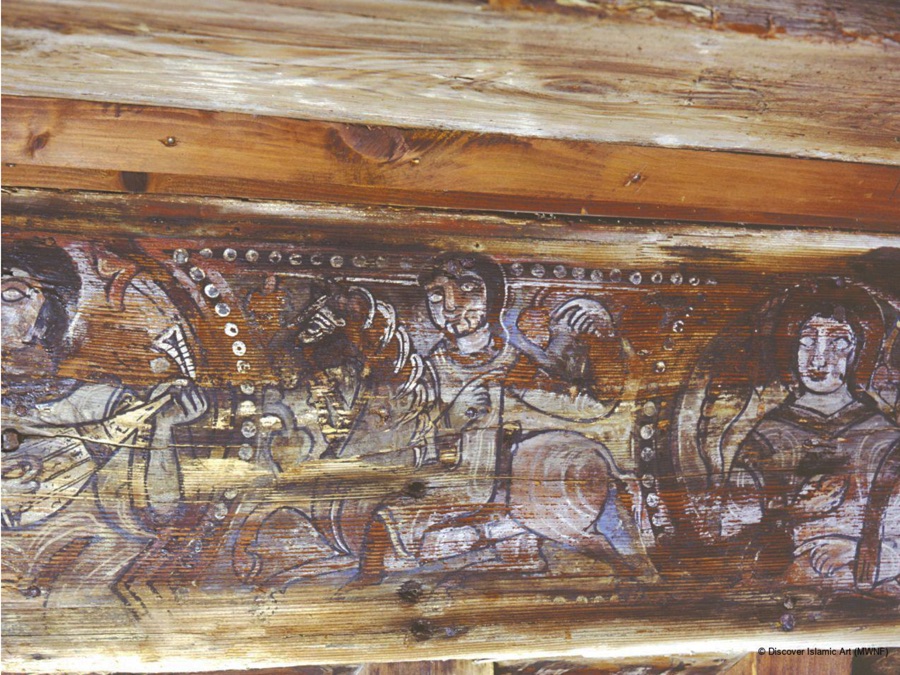The painted panels on the Cefalù Cathedral ceiling, arranged on horizontal boards, are an interesting example of 12th-century wood painting. Traces of gold leaf, also found in the Palatine Chapel (iconographic similarities have also been found between Cefalù and the central aisle of the Palatine), and the precious blue lapis lazuli, the latter being considered royal, have been found among the bright colours. Despite the losses and the difficulty in reading some of the panels, it can be seen that the iconography, the result of a coherent process and skilled craftsmen, is diverse but features courtly, fantastic and natural world motifs.
In the long continuous panels, subdivided into medallions decorated with a beaded motif, there are repeated decorative scenes with lions (the lion is often repeated as the heraldic coat of arms of the Hauteville family), antelopes, griffins, snakes, sphinxes, rabbits, birds in heraldic poses, peacocks with open tails, camels, elephants, gazelles, twin animals and the presence of hexagonal and octagonal designs, of Islamic inspiration, which recall the decorations of the carving below. The scene of the swan/ibis is particularly unique: elegant and with a long beak, the animal is caught fighting a snake, recalling the Egyptian motif of the sacred ibis.
Interspersed with zoomorphic and branching plant decorations and floral motifs, other panels present depictions of warriors, falconers, hunters, horsemen, boldly outlined in black, and other men pointing at animals, playing instruments (including lutes, castanets, tambourines, cymbals, psalteries), dancing, drinking or holding cups and containers. The rendering of their costumes is refined, as is the study of expressions and physical characteristics. Other scenes are far more complex and feature the Tree of Life, the capturing of an animal, a peacock bearer, musicians on an elephant, a scribe, fantastic characters with fish tails and scenes of fighting.